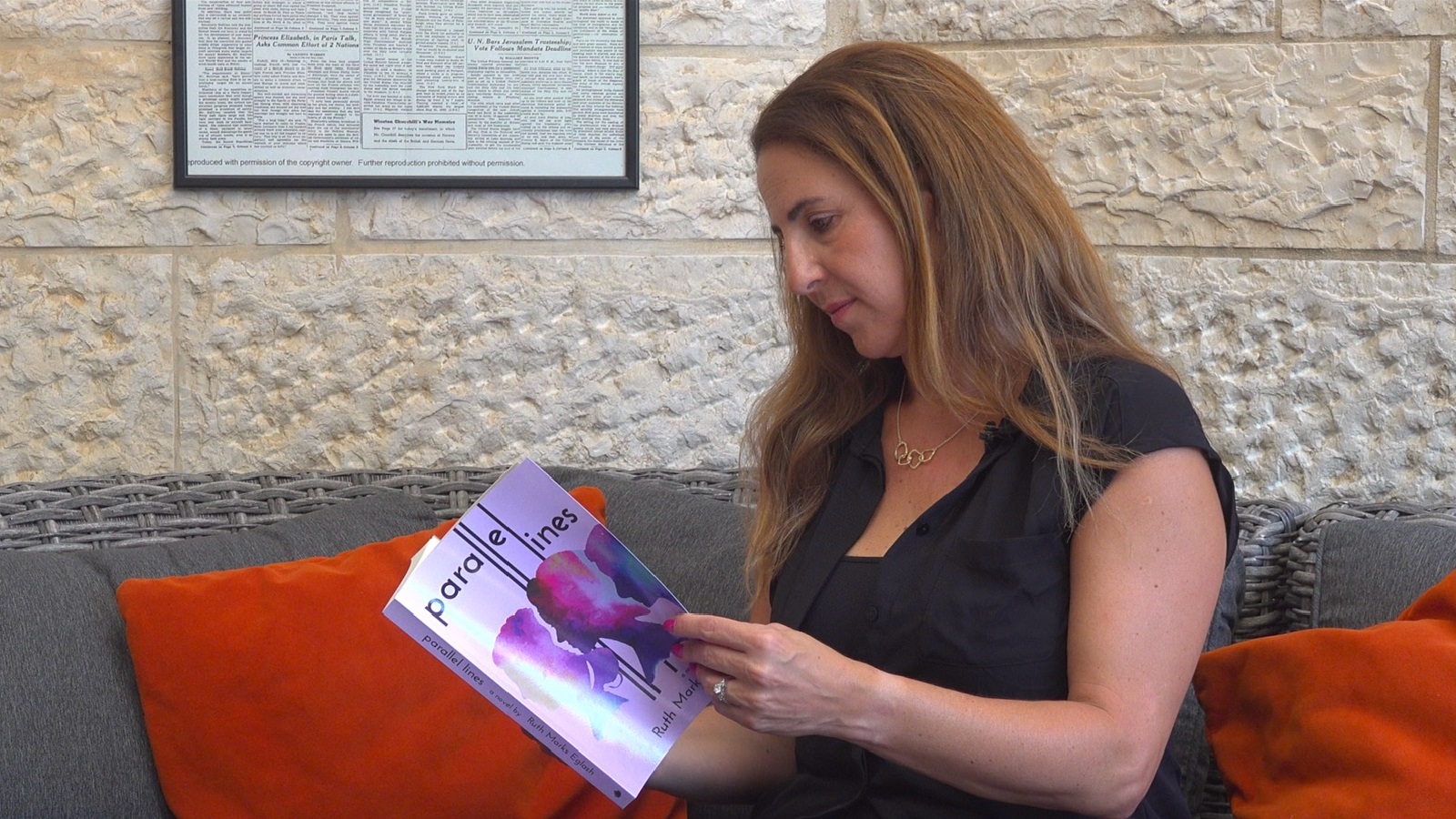Walking Parallel Lines Through Jerusalem With Its Author Ruth Eglash
Jerusalem’s narratives come alive through the lives of three fictitious teenage girls of different ethnicities but with the realism of common experiences
I’ve just finished reading Parallel Lines, a first novel by veteran Washington Post correspondent Ruth Eglash. In the book, Eglash fictionalizes the stories and ideas that her Jerusalem reporting stimulated. She does so through the eyes of three young girls, each representing one of the holy city’s primary ethnicities. While the similarities between the girls are striking, Jerusalem takes center stage as we witness the city’s impact on the protagonists’ lives.
The Media Line: “Fact or fiction?” kept going through my mind as I scrolled through the pages and read really intensely your new book. The three characters Nour, Tamar, and Rivki each [are] different, and yet, growing up in Jerusalem as teenagers. Why did you choose teenage characters as opposed to parents?
Ruth Eglash: I wanted to explore this conflict’s impact on young people. That was uppermost in my mind when I wrote this book. I thought, “How can I bring shape to this conflict that I have been covering?” As you noted, I am a long-time journalist and have been covering this conflict for over 20 years. I really wanted to focus on how it impacts young people. I don’t think, as journalists, we talk about that enough.
Journalists tend to interview the adults driving the conflict. We interview politicians and parents but don’t talk to young people. I felt we needed to know what it’s like to grow up in a city that is always in conflict, permanently tense, and divided. What does that do to the next generation?
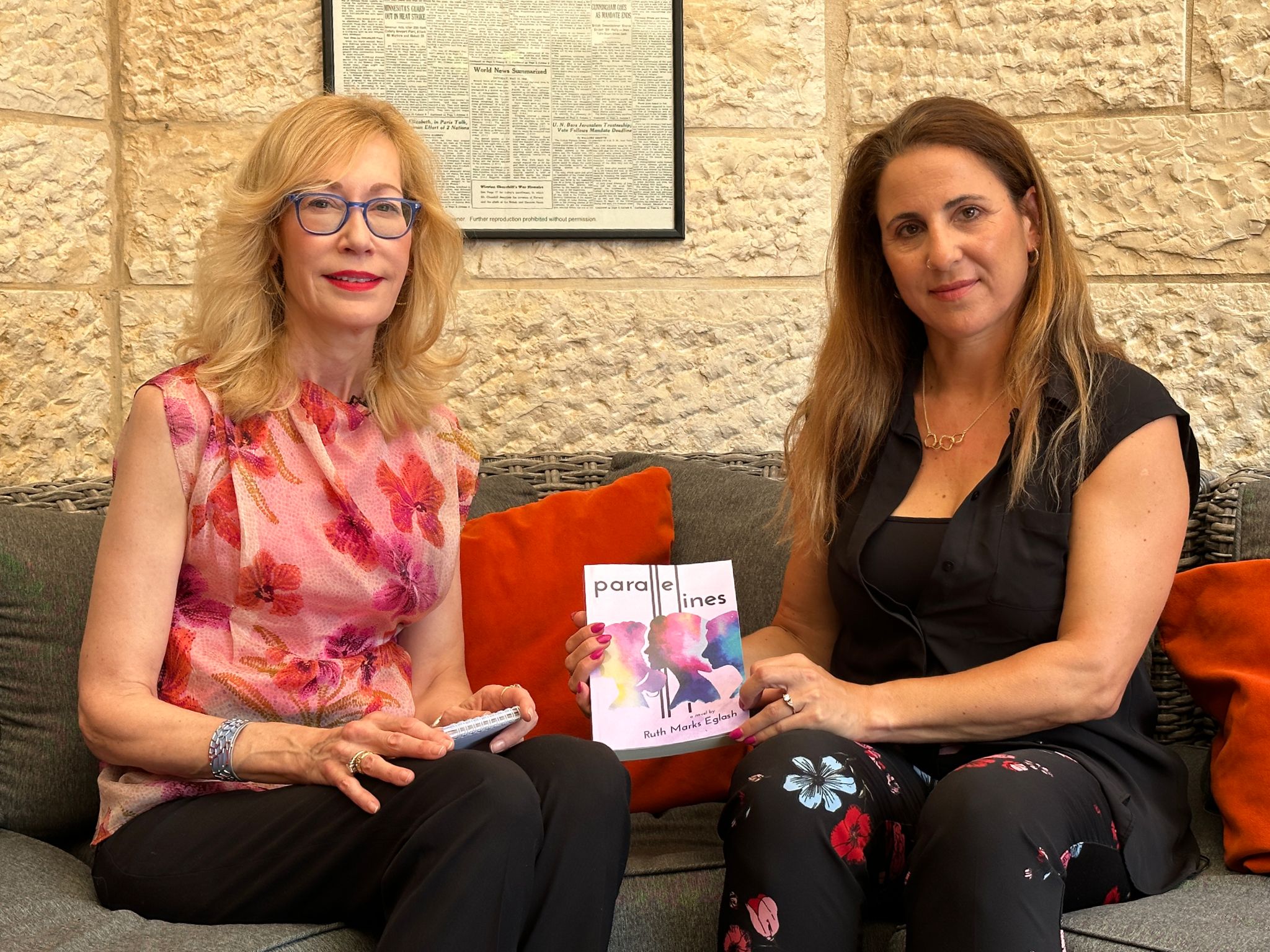
Ruth Eglash (R) and The Media Line’s Felice Friedson, at Eglash’s Jerusalem home, July 2023. (Dario Sanchez/The Media Line)
TML: Ruth, what is the common bond between these three young women, and what do they have in common?
RE: Teenagers are teenagers. Teenage girls share many of the same concerns when they reach a certain age. They look at themselves. They worry about their friends. They worry about how the world sees them. They also worry about things going on around them. I think that’s universal; it’s true for teenage girls everywhere.
I have interviewed so many people from so many different backgrounds in Jerusalem. One thing that hit me is that ordinary people’s concerns are similar in Jerusalem, Israel, the West Bank, and everywhere in the world.
TML: Ruth, aren’t you often asked why your book didn’t have a journalist as a character?
RE: You know, it’s funny. Whenever I have sat down to write fiction, there’s always been a journalist protagonist. However, this book was really driven by my own children, who were coming of age in the years when the book is set: 2015 and 2016. They gave me inspiration. I was writing about the conflict for the Washington Post. At the same time, I was trying to explain it to my children. I had an audience of millions, but also these three young people. It was an interesting contrast: my efforts to explain things to an audience of millions and my efforts to explain things to an audience of three young people living through it.
TML: Can you touch on some of your other experiences that you drew from in order to create this book?
RE: The book is set in 2015 and 2016, a time Israelis refer to as the “Stabbing Intifada.” There was an increase in violent attacks, terrorist attacks, stabbings, shootings, and vehicular attacks in Jerusalem. I was on the scene for many of those. In other cases, I wrote stories interviewing both victims and perpetrators or the families of perpetrators. In many cases, the perpetrators had been killed. I really got to see both sides of the conflict.
There’s one part of the book where I get into the feeling of what’s happening in East Jerusalem. People familiar with the story will recognize one of those references. Those are real experiences I had as a reporter.
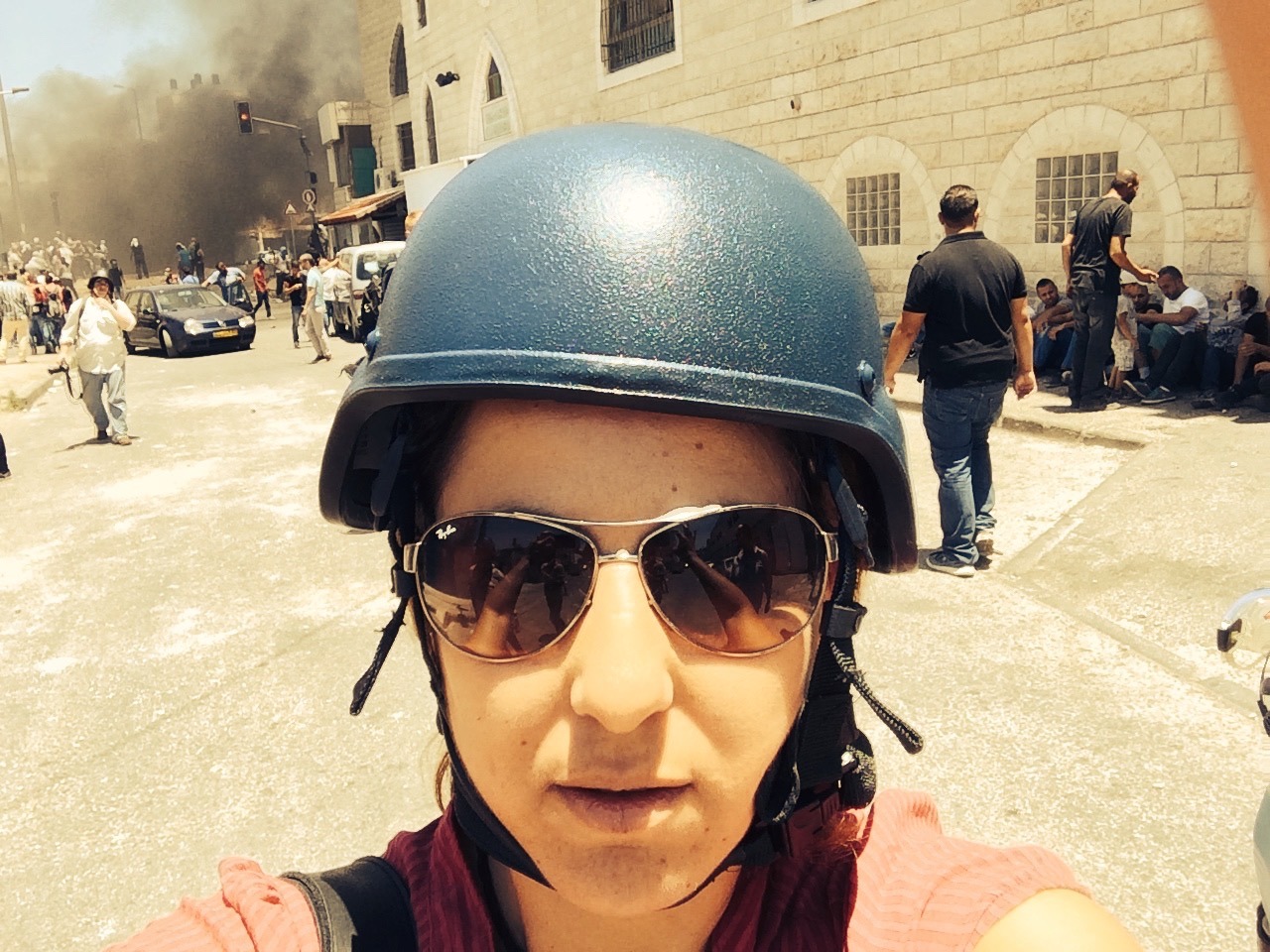
Ruth Eglash, working in the Shuafat neighborhood in East Jerusalem, 2014. (Courtesy)
TML: Those living in Jerusalem might have more knowledge of some of the items and things that you write about in your book. Is it more difficult to draw and paint the picture that you’re trying to do so clearly for the larger audience?
RE: People who have read the book so far and live in Jerusalem identify with the setting, the story, the intricate details, and the nuances of this conflict. My aim, however, was to reach people who don’t live here. People who live outside of Israel, don’t understand the conflict, or know nothing about it, but want to understand and learn more.
I also targeted the book at people who think they know about the conflict from the news or social media. They don’t really know it, however. You can only really understand the nuances, the contradictions, the overlap, and the dissonance between each of the different communities when you live in Jerusalem.
TML: Ruth, who really is your audience? I mean, you have some dark moments that are written in the book eloquently, but yet, they’re hard moments.
uth: I think this book will challenge all groups. We live in a world that is so polarized, where people have such strong opinions and struggle to see the other side’s point of view. Especially here.
We see the narratives of either one side or the other. People hold on to those narratives and refuse to acknowledge the other side. Reading this book is going to be very difficult. There were times when I was writing it, and I thought, “Well, no one will like this book. No one can identify with it because it shows the other side.” It shows the different Jerusalem narratives.
This holiday season, give to:
Truth and understanding
The Media Line's intrepid correspondents are in Israel, Gaza, Lebanon, Syria and Pakistan providing first-person reporting.
They all said they cover it.
We see it.
We report with just one agenda: the truth.
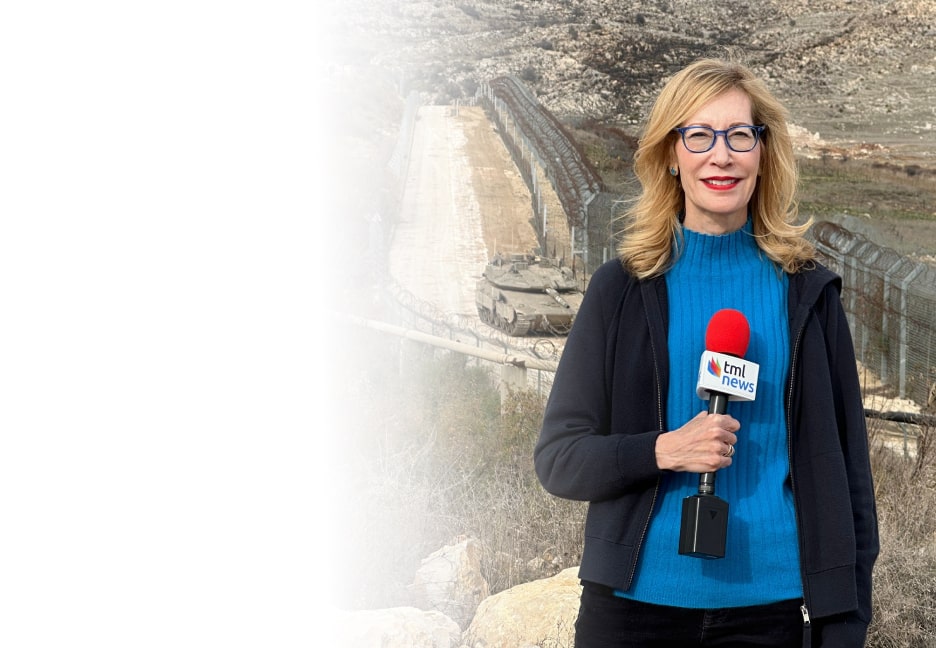
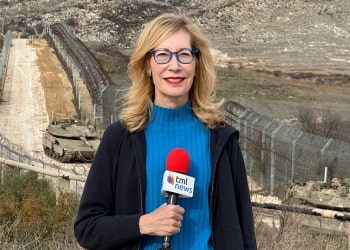
I hope people will have an open mind when they read it and learn something about the other side. I’ve already had feedback from people who say, “It was difficult to read, but I also learned something new. I saw a different perspective.” That, essentially, is my goal.
TML: You present graphic descriptions of some horrific moments. Some are bloody and gory, and yet you tell this story through the eyes of young women; teenagers. Is this book for youth?
RE: This book is aimed at youth. That was my goal. Unfortunately, today, teenagers are not immune or cut off from witnessing terrible acts on television. They are exposed to the internet and see many different things.
In Jerusalem, moreover, this is the reality for many teenagers. They are interested in all the usual things: clothing, pop culture, and music, the other sex. But they are also, unfortunately, in the middle of an ongoing conflict. It’s all around them. They are aware of things happening.
Many of the stories in the book are based on the experiences of my daughter Gefen, who was studying in Jerusalem at the time. She would come home from school at the age of 13 or 14 and say that the train had stopped because people were protesting. Or, that everyone had to get off the bus because there had been a suspicious package. She would ask, “Why would someone do something like that?”
Teenagers are aware. We should give them more credit. It’s vital for them to read this and understand that all sides are going through similar experiences.
TML: The themes are much about dual narratives, particularly when speaking about Tamar and Nour, and then you pair a Jewish doctor, Dr. Friedman with Nour, and Dr. Jalal with Rivki. Were there times that you just wanted to just scrap what you wrote and rewrite it, because you weren’t sure that it was going to play out effectively?
RE: I did a lot of writing and rewriting. I really wanted to highlight these places in Jerusalem, even though the communities live totally separately, and the narratives, as you say, are dueling with no crossover.
There are places in Jerusalem where the communities meet, and I wanted to highlight that. One is on the light rail, which is why I named the book, Parallel Lines. That’s why some of the scenes are set on the light rail. The different communities also meet in the hospitals, of which there are three major ones in Jerusalem. They are a study in coexistence, in a beautiful way.
I also did many stories in Hadassah Hospital. One of my favorites was in 2015, about two Hadassah doctors. The first, a Palestinian, was named Dr. Eid, while the second, a Jewish American Israeli, was named Dr. Fried. They worked together, saving the lives of victims of these attacks while also working to help the perpetrators. It was important to me to show the contradictions and nuances that are not obvious.
TML: What is your goal in Parallel Lines regarding political lines, societal lines, and religious lines?
RE: My main goal is for as many people as possible to read it. I know that the Israeli-Palestinian conflict is not something people like reading about. It upsets many people. It has a lot of sensitivities. My goal, however, is for people living outside Jerusalem and Israel to better understand what life is like for those living here. Or, for those people who live outside of Israel and think they know about the conflict but don’t really understand the heart of it, the nuances, the different ways of life, and the different people. I want as many people as possible to read my book.
TML: The elders of the family tend to represent the more rational view of humankind. If you look today at the population, do you really see that this exists, that it’s possible to see Jews, Arabs and Muslims breaking bread together?
RE: Some would say writing this story as fiction is wishful thinking. Perhaps I used my imagination too much when showing different groups in Jerusalem living together and getting along. I don’t think I’ve taken it that far. However, based on my research for this book and my work as a journalist, I think that many in Jerusalem want to live here in peace.
I don’t know if they will break bread together, but I do know that they want to live here. They want to live their lives and understand that the other side is here; there is no escaping that. They don’t expect the other side to vanish, so they must find a way to live together. That was my message.
Most people want to live their lives. And if that means together, then together.
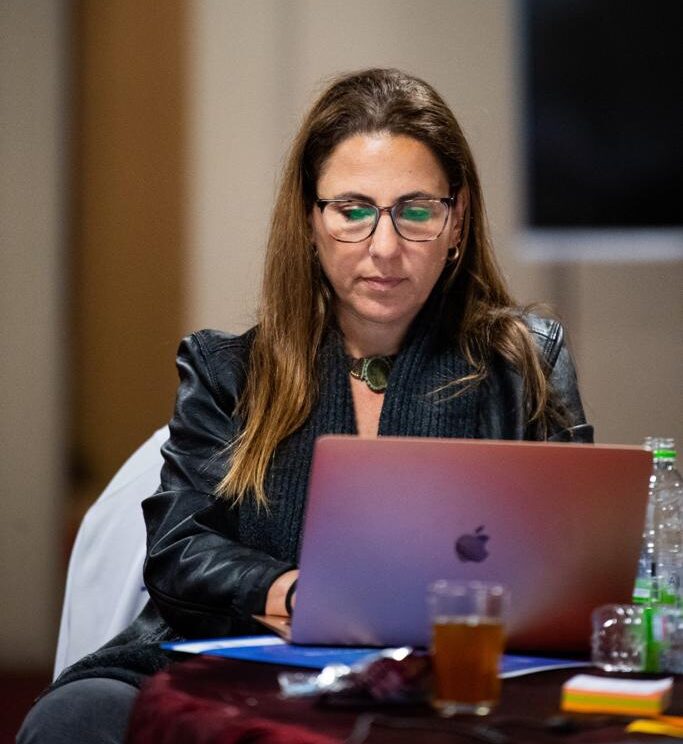
Ruth Eglash working in Morocco after the Abraham Accords were signed. (Tzachi Shemesh)
TML: The inner fabric of Israeli society is woven together through your book, and you illustrate this through the light rail when they stop and announce the different stops [such as] Bab al-Amud or Sha’ar Shechem. That’s Damascus Gate. You also speak about Nour looking to take matriculation exams both in Arabic and Hebrew. My question is, does this really change things? Do you feel that society having the meshing of the different voices of the different religions plays out and counts?
RE: I remember the time before the light rail, which has been in Jerusalem for perhaps 10 years. Before that, the different communities, the neighborhoods, were separate. Now, you have this train running through the middle of Jerusalem, stopping in all the different neighborhoods, and allowing the people living there to use the same train. That really strikes me.
The train links everyone together. I don’t know about the future, but change will be slow. The young Palestinian women I interviewed for this book, whom I sat with and heard their stories, were hopeful and positive. They focused on learning and living their lives, becoming better educated, and working within that fabric.
The point you raise about young Palestinians studying both Palestinian matriculation exams, the Arabic “Tawjihi,” and the Israeli matriculation exam, the “Bagrut,” is true. I wrote that story several years ago. I was in a school in East Jerusalem where these brave and intelligent young women were studying for two sets of exams! They knew that if they wanted to improve their situation, that’s what they needed to do.
TML: Rivki, who represents the Haredi community is afflicted with Crohn’s disease and finds herself in Hadassah Medical Center. And [it is] her first tempting to the outside world… But if you look at the Haredi world today, has much changed?
RE: It’s a very insular community, but there are moments when it is exposed to the secular world. There’s no way to hide from it. In Jerusalem, young women are increasingly obliged to work to support their families.
We meet Haredi people in accounting firms and the bank, we see them traveling on the light rail, or we see them in the hospital. There is no choice. Some elements of the ultra-Orthodox community are modernizing. I know them. I’ve interviewed them.
Do I think they will completely change their way of living? Probably not. I do think they understand that they need to move forward. I think there is more of this understanding within the community than we suspect.
TML: The light rail and Hadassah Medical Center are the bridges where your characters meet, and yet, most remain untouchable. Then you depict this picture of Nour and her friends going to Jaffa for an interfaith event. How realistic is it today when we look at the whole picture of what happens in Israel, and separating Jerusalem from the rest of the country?
RE: Jerusalem is a unique entity. Even though it’s multicultural, with so many different groups, faiths, and nationalities, it’s difficult for them to meet and interact. That was the starting point for the book. But when I looked at other places in Israel, I saw that this wasn’t so.
Nour takes her class to Jaffa to visit a project by Jewish and Arab women working together. There are other places in Israel where the interaction is more natural. Jerusalem, however, remains this place of conflict and division.
I won’t try and answer your question because I don’t have one. However, that’s how it is, perhaps because of Jerusalem’s holiness, spirituality, and the strong place it holds in the hearts of the different faiths living here.
TML: It’s very difficult to be a journalist covering not just Jerusalem, but Jerusalem and the Middle East. Ruth, in looking back at years of coverage, how hard is it today to get that story straight?
RE: It’s challenging to be a journalist covering this region, particularly the Israeli-Palestinian conflict. There is so much scrutiny of the media. Journalists have become part of the conflict, and the narrative is at the center. Each side has a narrative, and the people who tell it are part of the conflict.
It’s becoming harder, especially with social media and platforms like Twitter and Facebook. Our readers interact with, and react to, what we publish. That’s one of the reasons I decided to write fiction. Journalists have lost their ability to influence, change, or convince people. The events here, even the facts, are subjective. That’s one of the central problems in reporting from here.
TML: Well, no spoiler alerts here today. I hope everyone will go out and get Parallel Lines. And it’s an easy read, but I think it’s important because we get a sense of Jerusalem. We get a sense of the different voices that are living in this country.
RE: Thank you so much!
TML: Thank you!
